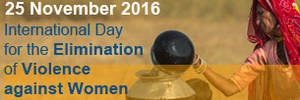The power of gender-transformative media development projects
During the second day of the 30th IPDC Council session, the importance of gender equality and women’s empowerment in the media was discussed, with the presence of a panel of experts.
As recalled by Ms Gülser Corat, UNESCO Director of the Division for Gender Equality, gender equality is one of UNESCO's two global priorities, with a commitment to promote equality between women and men across the Organization's mandate. It is recognized both as an important end in itself and as an essential means for the achievement of sustainable development in all its dimensions.
Ms Annette Young, France 24 journalist and presenter, explained that, due to their transformational nature, media tend to create and strengthen gender stereotypes. Mainly managed by men, women are poorly represented in the world of television and news in general. “A BBC report published in October 2016, illustrates how empowering women in the media is essential to overcome gender inequalities in society at large”, she said.
Other guests included Ms Misako Ito, UNESCO Advisor for Communication and Information in the Bangkok Office, and Mr Elvis Michel Kenmoe, UNESCO CI Officer in Gabon Office, who presented examples of successful gender transformative projects from their respective regions.
The discussion was welcomed by IPDC Council Member States who reflected on possible ways to place more emphasis on gender-transformative projects and to position gender equality and women’s empowerment at the center of IPDC’s media development agenda.
<- Back to: Single view Gender






